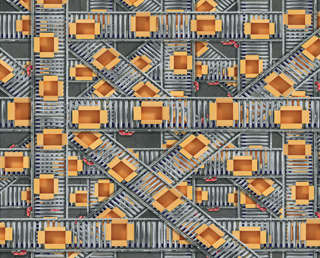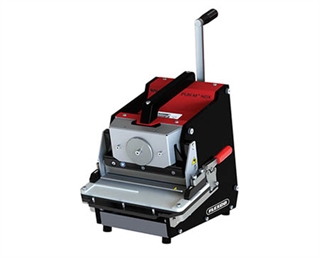Logistics Spotlight: Best Practices for Punching Belts That Drive Live Roller Conveyors
 Logistics is defined as the detailed coordination of a complex operation involving many people, facilities, or supplies. That description really does encompass all the moving pieces required in warehousing, fulfillment, and distribution, especially when talking about belt conveyor systems. After all, it isn’t just about the boxes, totes, and polybags that are sent down belt-driven live roller conveyors, but about the equipment involved, the line operators and maintenance team keeping everything running, and the customers waiting for their items.
Logistics is defined as the detailed coordination of a complex operation involving many people, facilities, or supplies. That description really does encompass all the moving pieces required in warehousing, fulfillment, and distribution, especially when talking about belt conveyor systems. After all, it isn’t just about the boxes, totes, and polybags that are sent down belt-driven live roller conveyors, but about the equipment involved, the line operators and maintenance team keeping everything running, and the customers waiting for their items.
With all those moving parts, it is of utmost importance that everything runs as smoothly as possible and downtime is minimal. So when you need to repair a belt on your live-roller conveyor, every minute counts.
Looking to increase uptime when splicing belts that drive live rollers?
Check out our blog for best practices and solutions!
A quality splice begins with a quality punch
The process of conveyor belt repair begins with belt preparation. Part of that preparation involves punching fingers into the belt for splicing. The importance of fast and efficient belt punching is often overlooked as most people focus on the actual splice press for time savings and consistency. But quality punched fingers are critical to a quality endless splice, so why not begin with preparing your belt for proper splicing?
Here are a few things to look for when deciding which belt punch will work best on belts that drive live rollers:
-
Precise Indexing – Indexing is the process of moving the conveyor belt to the next position for punching. Misindexing can cause major problems as you prepare your splice. If your belt misindexes, your fingers aren’t going to be evenly dimensioned or formed at the edges, and they will not mesh together for a quality splice. Misindexing usually occurs when multiple repositioning steps are involved and one is skipped or followed incorrectly in the process. Choosing a punch that automatically indexes is key to avoiding misindexing during punching.
-
Cord Fraying – It’s the nature of the beast with aramid belts to have some cord fraying, but having a sharp, durable blade can mean the difference between spending a few moments trimming the fingers, and literally cutting into some valuable production time with extensive trimming. Limiting frayed aramid cords is essential to ensure splice integrity. The ideal blade on your punch should be thick enough that you don’t see curling at the edge, and sharp enough that you have very few fraying cords.
-
Safety – If you’ve ever had a blade get stuck in your belt, you know it is tempting to jab your screwdriver in there to dislodge the belt. But that move can actually damage the blade, the screwdriver, or both. So it’s important to look for a blade guard to protect hands and fingers and to choose a punch that releases the belt after punching so that problem doesn’t even happen.
-
Ease of Maintenance – Whether it is a proactive repair or a reactive repair, you want to make sure your belt maintenance tools are up for the task. So look for a punch that is easy to maintain with quick-change blades that don’t involve taking apart the entire machine and figuring out how to put it back together again. That way, you can keep your downtime to a minimum.
-
Ease of Set-Up and Use – Possibly be the most important point to focus on when choosing a belt punch is to make sure that the punch is easy to set-up, easy to use, and easy to transport from splice to splice. You want every member of your maintenance team to be comfortable using it and you want to be able to get the job done as quickly as possible.
 The Novitool® Pun M™ NDX Mobile Finger Punch
The Novitool® Pun M™ NDX Mobile Finger Punch
You may have already heard about the Novitool® Aero® 325 Splice Press, Flexco’s solution for splicing belt-driven, live roller conveyors. What you may not have heard is that its popularity sparked interest in a finger punch that could accurately punch aramid corded belts with little to no fraying, as well as traditional thermoplastic guided belt. So, Flexco developed the Novitool® Pun M™ NDX Mobile Finger Punch to streamline the belt prep and splicing process.
The Pun M NDX features an easy-to-use, single-hand crank that punches the belt and re-indexes automatically, with no need for extra steps. It also features a sharp, durable blade that produces fingers with little to no fraying cords, along with a guard that protects the operator and assists with the release of the belt from the blade. Speaking of the blade, change outs are easy, without disassembly of the entire tool.
But don’t take my word for it, check out how easy the Pun M NDX is to use by watching it quickly punch a 200 mm belt below.
Authored by: Michelle Graves, Marketing Specialist – Novitool
Graves manages the overall global business, market plans, technical support, and activities associated with the light-duty belting market for the Novitool product line, including new product development, market analysis, and global strategy. Graves holds a bachelor’s degree from Albion College as well as a master’s degree from Grand Valley State University.
Subscribe to the Flexco Blog
Related Blogs
Published Date
September 15, 2020Product Group
- Endless Splicing Systems
Industries
- Parcel Handling
- Warehousing and Distribution
Issues
- Downtime
- Maintenance
